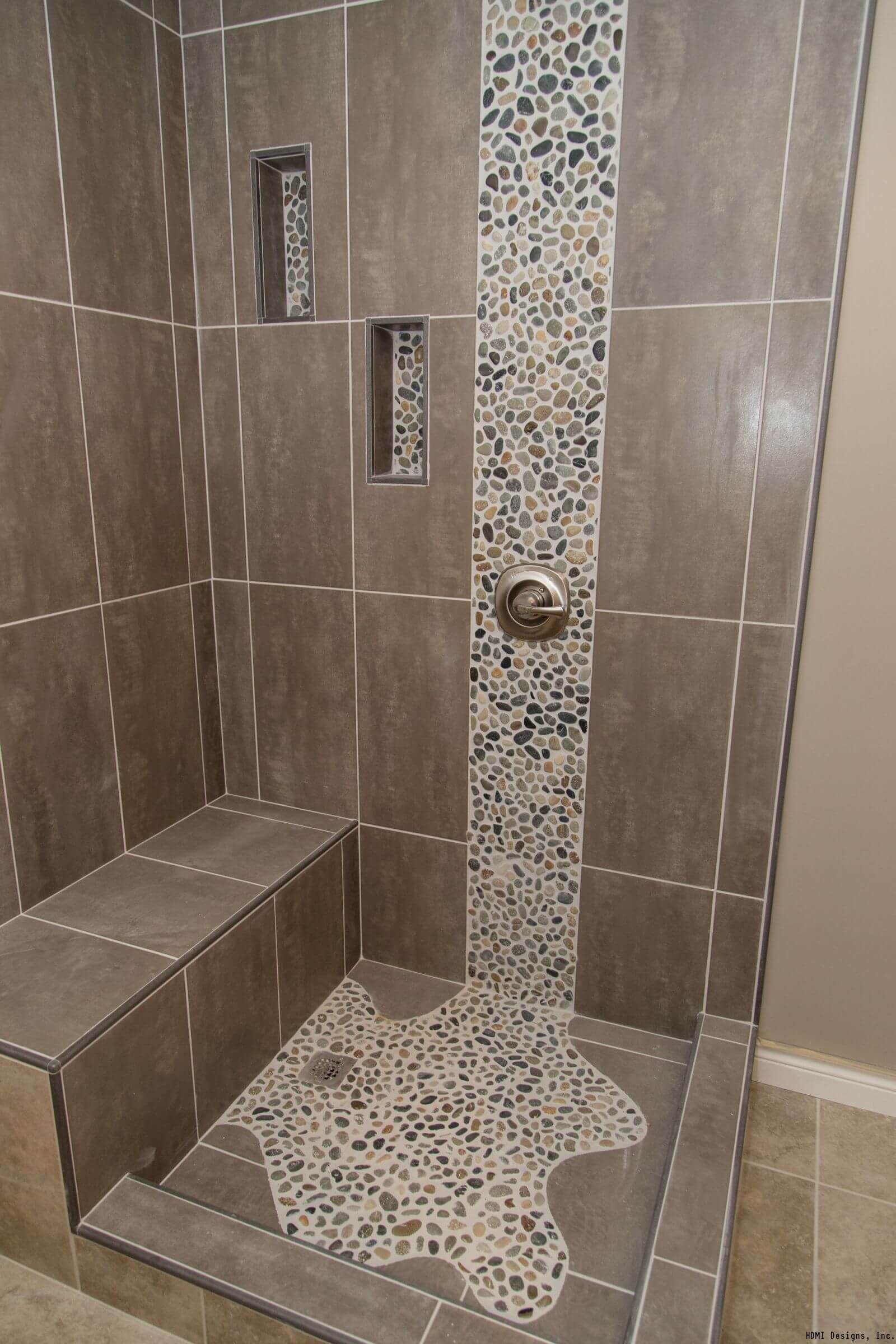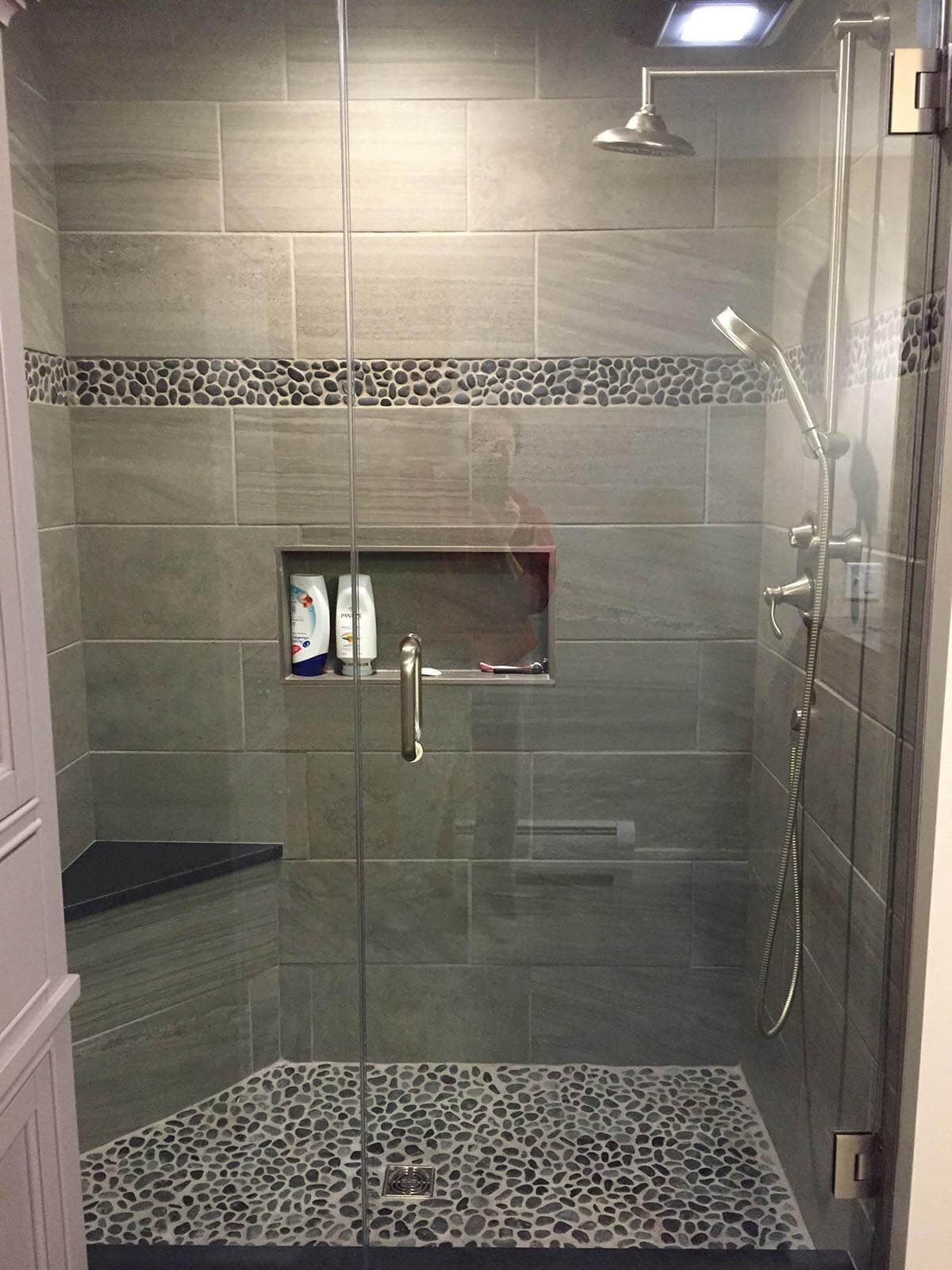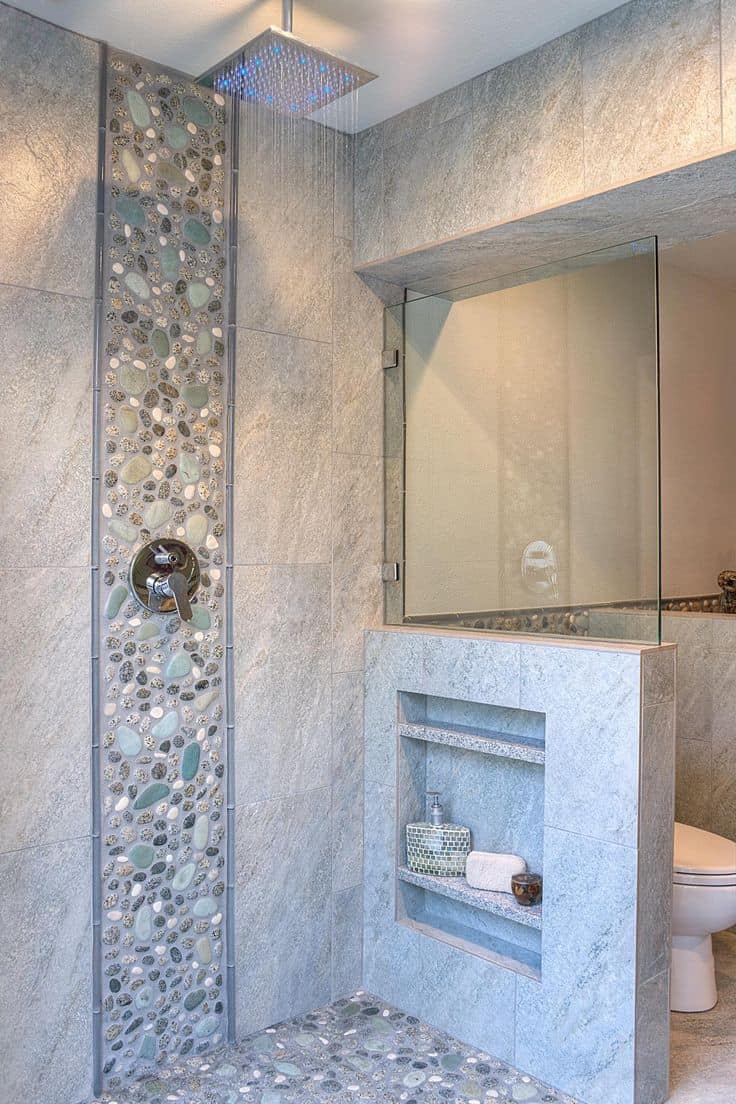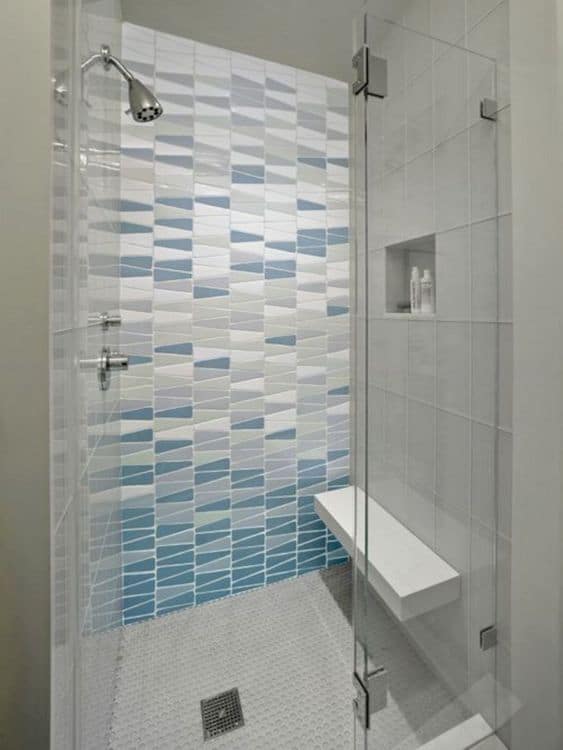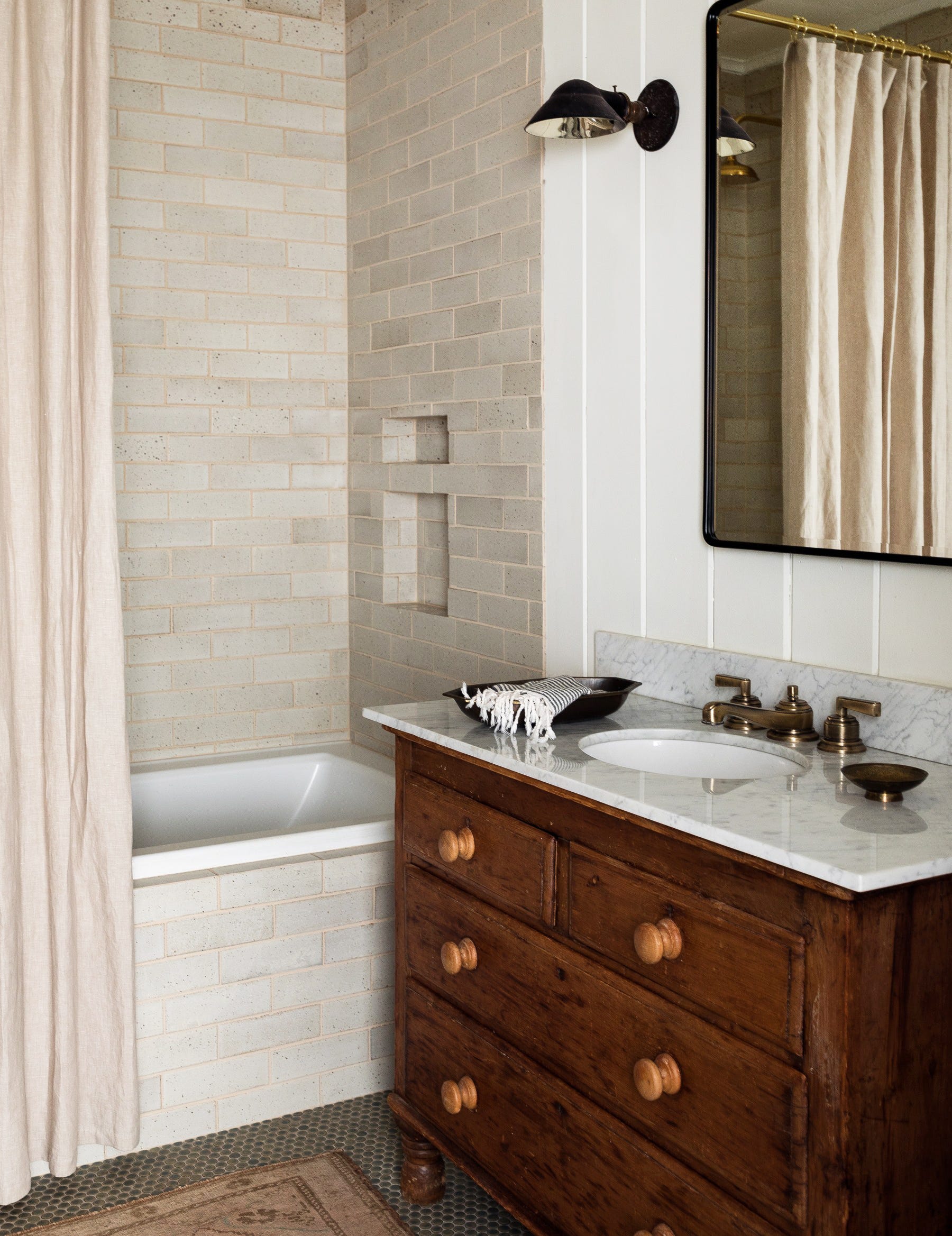Designing a bathroom tile shower can be an exciting yet challenging project. The choices you make in tile, color, pattern, and layout can significantly impact the overall aesthetic and functionality of your bathroom. When it comes to bathroom tile shower design ideas, there are numerous possibilities to consider, each bringing a unique touch to the space.
First, consider the type of tile you want to use. Ceramic and porcelain tiles are popular choices due to their durability, water resistance, and ease of maintenance. They come in various sizes, shapes, and finishes, allowing for a wide range of design possibilities. Natural stone tiles like marble, travertine, and slate offer a more luxurious and timeless look, although they may require more maintenance to keep them looking pristine.
Another important factor is the color scheme. Lighter colors such as white, beige, and light gray can make a small bathroom feel more spacious and airy. Darker colors, on the other hand, can add a sense of coziness and sophistication. You might also consider using a combination of light and dark tiles to create a visually interesting contrast. For instance, using darker tiles on the shower floor and lighter tiles on the walls can create a striking effect.
Pattern and layout play a crucial role in the design of your bathroom tile shower. Subway tiles laid in a traditional brick pattern are a classic choice that never goes out of style. For a modern twist, you might lay them in a herringbone or vertical stack pattern. Mosaic tiles can add intricate detail and texture, making them ideal for feature walls or shower niches. Larger tiles can create a sleek, contemporary look and have the added benefit of fewer grout lines, which can make cleaning easier.
Incorporating different tile shapes can add a unique touch to your shower design. Hexagon, penny, and arabesque tiles are just a few options that can bring character and interest to your space. These tiles can be used uniformly across the shower or as accents to highlight certain areas, such as niches or shower benches. Combining different shapes and sizes can create a dynamic and visually engaging design.
The use of accent tiles is another way to elevate your bathroom tile shower design. A strip of accent tiles can break up the monotony of plain tiles and add a pop of color or pattern. This can be particularly effective in a monochromatic design, where the accent tiles can provide a focal point. Consider using glass tiles, which can add a reflective quality and a touch of elegance to your shower.
When designing your shower, don’t overlook the grout. The color of the grout can dramatically affect the overall look of your tiles. Matching grout with your tiles can create a seamless look while contrasting grout can highlight the pattern and shape of your tiles. Additionally, using epoxy grout can be beneficial in showers due to its resistance to stains and mold.
For those looking for a minimalist and contemporary design, large-format tiles are a great option. These tiles create a seamless and sleek appearance, making the shower space feel larger and more open. Pairing large format tiles with a frameless glass shower door can enhance this modern aesthetic, providing a clean and unobstructed view of the tile work.
Texture can also play a significant role in your shower design. Textured tiles can add depth and interest to the space. For instance, a feature wall with 3D tiles can create a stunning visual effect. Textured tiles can also provide practical benefits, such as slip resistance for shower floors.
Shower niches are an excellent way to add both functionality and style to your shower. Tiling the back of the niche with a different pattern or color can make it stand out as a design feature. Niches provide a convenient place to store shampoo, conditioner, and other shower essentials, keeping them within easy reach while maintaining a clean and uncluttered look.
Another trend in bathroom tile shower design is the use of natural and earthy tones. These colors can create a calming and spa-like atmosphere, perfect for unwinding after a long day. Stone-look tiles in shades of beige, brown, and gray can mimic the look of natural stone without the high maintenance.
For a touch of luxury, consider incorporating metallic tiles into your design. These tiles can add a glamorous and sophisticated element to your shower. They work particularly well as accents or borders, adding a bit of shimmer and shine to the space.
If you’re looking for a more traditional and timeless design, consider using classic marble tiles. Marble can add a sense of elegance and luxury to your shower. Although it requires more maintenance than ceramic or porcelain tiles, its natural beauty is unmatched.
Lastly, don’t forget about the ceiling. Tiling the shower ceiling can create a cohesive and finished look. It also protects the ceiling from moisture, making it a practical choice. You can use the same tiles as the walls and floor or choose a different design to add an unexpected element.
Common Mistakes to Avoid:
When designing a bathroom tile shower, one common mistake is choosing the wrong type of tile for the space. Not all tiles are suitable for wet environments. For example, some natural stones can be porous and require regular sealing to prevent water damage and staining. It’s essential to select tiles that are specifically designed for use in showers to ensure durability and longevity.
Another mistake is neglecting the importance of proper waterproofing. Without adequate waterproofing, moisture can seep behind the tiles and cause mold and mildew growth, leading to structural damage. Ensure that a waterproof membrane is installed behind the tiles and that all seams and joints are properly sealed.
Improper tile layout and installation can also lead to problems. Uneven tiles, inconsistent grout lines, and poorly cut edges can detract from the overall appearance of your shower. It’s crucial to take precise measurements and plan the layout carefully before starting the installation. Hiring a professional tile installer can help ensure a flawless finish.
Choosing the wrong grout color can significantly impact the final look of your shower. A grout color that clashes with your tiles can be distracting and visually unappealing. Always test grout colors with your chosen tiles before committing to one. Additionally, using high-quality, mold-resistant grout can prevent discoloration and staining over time.
Neglecting ventilation in the shower area is another common mistake. Proper ventilation is crucial to prevent excess moisture buildup, which can lead to mold and mildew growth. Ensure your bathroom has an adequate exhaust fan and consider incorporating a window or vent in the shower area for improved airflow.
Failing to consider the practicality of the tile design is another pitfall. While intricate mosaic patterns and textured tiles can be beautiful, they may require more maintenance and cleaning. Consider the ease of cleaning and upkeep when selecting your tiles, especially for high-use areas like the shower floor.
What type of tile is best for a shower?
Porcelain and ceramic tiles are highly recommended for shower use due to their durability, water resistance, and low maintenance. They come in various styles, colors, and finishes, making them versatile for different design aesthetics. Natural stone tiles like marble or slate can add luxury but may require more upkeep. Always ensure that the tiles you choose are rated for wet areas.
How do I choose the right grout color for my shower tiles?
Choosing the right grout color depends on the look you want to achieve. Matching grout colors can create a seamless appearance while contrasting grout can highlight the pattern and shape of the tiles. Consider the overall color scheme and style of your bathroom. It’s a good idea to test grout colors with your tiles before making a final decision.
Can I use large format tiles in a small shower?
Yes, large format tiles can be used in small showers to create a sense of space and reduce the number of grout lines, making the area easier to clean. They can make a small shower feel more expansive and modern. However, ensure that the tiles are properly installed to prevent any issues with water drainage.
How do I maintain and clean shower tiles effectively?
Regular cleaning with mild, non-abrasive cleaners will keep your shower tiles looking fresh. For natural stone tiles, use cleaners specifically designed for stone to avoid damage. Sealing grout lines can prevent stains and mold growth. Ensure proper ventilation in the bathroom to reduce moisture buildup and prevent mildew.
Is it necessary to tile the shower ceiling?
Tiling the shower ceiling is not a necessity, but it can enhance the design and protect the ceiling from moisture. It creates a cohesive look and can be especially useful in preventing moisture damage in bathrooms with high humidity. If you choose not to tile the ceiling, ensure it is painted with moisture-resistant paint to protect it from water damage.
Related articles:
- Restore Old Bathroom Tile
- Rustic Bathroom Tile Designs
- Vertical Bathroom Tile Designs
- Bathroom Tile Makeover
- Modern Bathroom Tile Ideas
- Blue Glass Mosaic Bathroom Tiles
- Bathroom Tile Shower Design Ideas
- Modern Bathroom Tile Texture
- Modern Bathroom Tile Layout
- Bathroom Tiles Painted Over
Bathroom Tile Shower Design Ideas: Transform Your Space into a Luxurious Oasis
The bathroom is one of the most important rooms in any home. It’s where you start and end your day, and it’s where you go to relax and unwind. One of the key elements of any bathroom design is the shower area, and choosing the right tiles can make a huge difference. Whether you’re looking to create a spa-like atmosphere or simply update your existing shower, here are some bathroom tile shower design ideas to inspire you.
1. Mosaic Tiles for a Dramatic Effect
Mosaic tiles are a great way to add visual interest to your shower area. They come in a wide range of colors, patterns, and textures, making them a versatile choice for any bathroom style. When used as an accent tile, mosaic tiles can create a dramatic effect that will transform your shower area into a work of art.
What is the best way to maintain mosaic tiles in the shower?
Answer: To maintain your mosaic tiles, it’s important to keep them clean and dry. Use a non-abrasive cleaner to remove any dirt or grime, and make sure to dry the tiles thoroughly after each use. Avoid using harsh chemicals or abrasive sponges that can damage the surface of the tiles.
2. Subway Tiles for Timeless Elegance
Subway tiles have been a popular choice for bathroom showers for decades due to their timeless elegance and versatility. They come in a variety of sizes and colors, making it easy to find the perfect match for your bathroom design. The classic white subway tile is always a safe choice, but don’t be afraid to experiment with different colors and finishes for a unique look.
Are subway tiles easy to install?
Answer: Subway tiles are relatively easy to install compared to other types of tiles. They can be installed in a variety of patterns including stacked, herringbone, or brick pattern. However, it’s important to hire a professional installer to ensure that the tiles are installed correctly and will last for years to come.
3. Large Format Tiles for a Seamless Look
Large format tiles are a great choice for modern bathroom designs. They create a seamless look that gives the illusion of a larger space. They’re also easy to clean and maintain, making them a practical choice for busy families. When choosing large format tiles, consider using neutral colors such as beige or gray for a calming effect.
Can large format tiles be used on the shower floor?
Answer: Yes, large format tiles can be used on the shower floor. However, it’s important to choose non-slip tiles that have adequate traction to prevent slips and falls. It’s also important to ensure that the tiles are properly sealed to prevent water damage.
4. Glass Tiles for a Sparkling Effect
Glass tiles are an excellent choice if you want to add some sparkle and shine to your shower area. They come in a variety of colors and finishes, including clear, frosted, and iridescent. Glass tiles reflect light beautifully, creating a sparkling effect that will make your shower area feel luxurious and glamorous.
FAQ: How do I clean glass tiles in the shower?
Answer: To clean glass tiles in the shower, use a non-abrasive cleaner and a soft-bristled brush to remove any dirt or grime. Avoid using harsh chemicals or abrasive sponges that can damage the surface of the tiles. Dry the tiles thoroughly after each use to prevent water spots.
5. Natural Stone Tiles for Rustic Charm
Natural stone tiles are a popular choice for bathrooms with rustic or traditional designs. They come in a variety of textures and colors, including marble, slate, and travertine. Natural stone tiles add warmth and charm to any bathroom design, creating an inviting atmosphere that will make you feel right at home.
FAQ: Do natural stone tiles require special maintenance?
Answer: Yes, natural stone tiles require special maintenance to keep them looking their best. It’s important to seal the tiles regularly to prevent water damage and staining. Use a non-abrasive cleaner to clean the tiles, and avoid using acidic or abrasive cleaners that can damage the surface of the tiles.
Conclusion
Choosing the right tiles for your shower area is an important part of any bathroom design. Whether you prefer mosaic tiles for a dramatic effect or natural stone tiles for rustic charm, there are plenty of options available to suit your style and budget. Consider hiring a professional installer to ensure that your Tiles are installed correctly and will last for years to come. With the right tiles, your shower area can become a luxurious and inviting space that you will enjoy for years to come.
